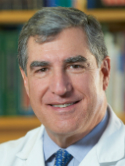Do margins matter? the influence of positive surgical margins on prostate cancer-specific mortality Journal Article
| Authors: | Stephenson, A. J.; Eggener, S. E.; Hernandez, A. V.; Klein, E. A.; Kattan, M. W.; Wood, D. P. Jr; Rabah, D. M.; Eastham, J. A.; Scardino, P. T. |
| Article Title: | Do margins matter? the influence of positive surgical margins on prostate cancer-specific mortality |
| Abstract: | Background Positive surgical margins (PSMs) in radical prostatectomy (RP) specimens are a frequent indication for adjuvant radiotherapy and are used as a measure of surgical quality. However, the association between PSMs and prostate cancer-specific mortality (CSM) is poorly defined. Objective Analyze the association of PSMs with CSM, adjusting for fixed and time-dependent parameters. Design, setting, and participants Fine and Gray competing risk regression analysis was used to model the clinical data and follow-up information of 11 521 patients treated by RP between 1987 and 2005. Two extended models were used that adjusted for the use of postoperative radiotherapy, which was handled as a time-dependent covariate. Postoperative radiotherapy was modeled as a single parameter and also as early and late therapy, based on the prostate-specific antigen level at the start of treatment (≤0.5 vs >0.5 ng/ml). Intervention RP for clinically localized prostate cancer and selective use of secondary local and/or systemic therapy. Outcome measurements and statistical analysis The outcome measure was prostate cancer-specific mortality. Results and limitations The 15-yr CSM rates for patients with PSMs and negative surgical margins were 10% and 6%, respectively (p < 0.001). No significant association between PSM and CSM was observed in the conventional model with fixed covariates (hazard ratio [HR]: 1.04; 95% confidence interval [CI], 0.7-1.5; p = 0.8) or in the two extended models that adjusted for postoperative radiotherapy (HR: 0.96; 95% CI, 0.7-1.4; p = 0.9), or early and late postoperative radiotherapy (HR: 1.01; 95% CI, 0.7-1.4; p = 0.9). Conclusions PSMs alone are not associated with a significantly increased risk of CSM within 15 yr of RP. However, urologists should continue to strive to avoid PSMs, as they increase a man's risk of biochemical recurrence and need for secondary therapy and may be a source of considerable patient anxiety. © 2013 European Association of Urology. Published by Elsevier B.V. All rights reserved. |
| Keywords: | treatment outcome; prostatic neoplasms; prostatectomy; models; statistical; surgical margins |
| Journal Title: | European Urology |
| Volume: | 65 |
| Issue: | 4 |
| ISSN: | 0302-2838 |
| Publisher: | Elsevier Science, Inc. |
| Date Published: | 2014-04-01 |
| Start Page: | 675 |
| End Page: | 680 |
| Language: | English |
| DOI: | 10.1016/j.eururo.2013.08.036 |
| PROVIDER: | scopus |
| PUBMED: | 24035631 |
| DOI/URL: | |
| Notes: | Cited By (since 1996):1 -- Export Date: 2 April 2014 -- CODEN: EUURA -- Source: Scopus |
Altmetric
Citation Impact
BMJ Impact Analytics
Related MSK Work




